
Feb 19, 2024 | Sedona Yoga Festival Teacher Feature, Yoga Festival Experience
Vedic and Western Astrology: Our Life in the Stars with Dennis M. Harness, Ph. D.
Dennis M. Harness, Ph.D. is a self-proclaimed “Neo-Vedic or East–West Astrologer,” a professional Vedic Astrologer and lecturer who received his doctorate degree in Counseling Psychology from the California Institute of Integral Studies in San Francisco, California. For more than 30 years, Dennis has studied both Eastern and Western astrological techniques. Read on to learn more, and then study with Dennis at the Sedona Yoga Festival, March 14–17! Use code DENNIS10 for 10% off any pass.
Many of our participants are likely familiar with Western astrology and the tropical zodiac. What are the main differences between the Western and Vedic astrological systems?
I think the main difference between the two systems is that Western astrology, which is called tropical astrology, is based upon, and keeps us in touch with, the seasons; particularly the Solstice and Equinox points. Vedic astrology is more constellation-based, so it’s more of an astronomer’s view. For example, at night, if you go and look at Jupiter in the night sky, Western astrology would say that Jupiter now is in the sign of Taurus, the bull. But if you look at where Jupiter is in the night sky, you’ll see it’s right in the head of the ram in Aries. So there’s about a 23–24 degree difference between the two systems. One of the ways that the two systems connect is the aspects between the planets in both systems as well as the planetary transits.
In Vedic astrology, there’s much more emphasis on the Moon than the Sun sign. I’ve written a book titled The Nakshatras: The Lunar Mansions of Vedic Astrology, which describes the 27 divisions of the Hindu zodiac.
I trained in Western astrology and I consider myself a neo-Vedic astrologer in that I use the outer planets, Uranus, Neptune, Pluto, while many traditional Vedic astrologers don’t. For me, and this is just me personally, I think of Western astrology is like the waves on the ocean, and the Vedic system is more akin to the undercurrents, the riptides, the tsunamis in life.
Is Vedic astrology one of the Vedic sciences, like yoga or Ayurveda?
In Sanskrit, Vedic astrology is known as Jyotish, which translates to “the science of light,” bringing light into darkness. Vedic astrology can help to shed light, in a sense, in what path may be most fitting for a person’s spiritual development. For example, when in a person’s Vedic astrology chart Venus is really pronounced, you may see that person more connected with Bhakti yoga. Whereas if Saturn is strong, they may be more connected to karma yoga. Jupiter is somewhat connected with Raja yoga, because in India, Jupiter is called the guru planet. So in some ways, the planets are reflecting the different limbs of the Vedas, which is really cool.
Dr. David Fraley, a Vedic scholar who wrote one of the best books on Vedic astrology called The Astrology of the Seers, and included an entire section on these kinds of connections — particularly the chakra system and its connections to planetary energies.
So is Vedic astrology more scientifically-based?
Swami Sri Yukteswar, was a great Vedic astrologer, and was guru to Yogananda, the great saint who wrote Autobiography of a Yogi. Sri Yukteswar said it very eloquently: “A child is born at that moment in time that is in mathematical harmony with one’s soul karma. It reflect one’s unalterable past life’s and probable future results.”
I underline “probable,” because he said the message blazoned across the heavens at the moment of birth was not meant to emphasize fate, but was to arouse the soul to action or awaken the soul from slumber. So there is a mathematical, scientific aspect to it. And again, because Vedic astrology is astronomically based, there are in some ways more of a connection with a telescopic view of where the planets were.
Western astrology — and our zodiac signs — pulls deeply from archetypal characteristics. Is Vedic astrology also considering these kinds of archetypes?
It is very similar. I would say the significance of the planetary archetypes is very similar in the Western and Vedic systems. [Psychologist Carl] Jung had this beautiful quote, “The gods and goddesses no longer live on Olympus. They live in our minds as complexes and in our body as disease.” That is, the goal of archetypal psychology — and we could say archetypal astrology — is to feed the gods and goddesses. Astrology can help us to connect with the archetypes and planetary energies and befriend them.
My main teacher from Kerala, India, Chakrapani Ullal, said that Vedic astrology is 25% technique, 25% intuition, and 50% the grace of God, or we could say God or goddess. So 75% of the equation is what I call Graceland. I think it is good to have some basic training in astrological counseling as a spiritual life coach so that you can empower the client; leaving them with a sense of faith, optimism and hope for their future journey toward the divine in a way that empowers the client rather than weakening their will.
Experience the empowerment of Vedic astrology with Dennis at SYF! Tickets on sale now.
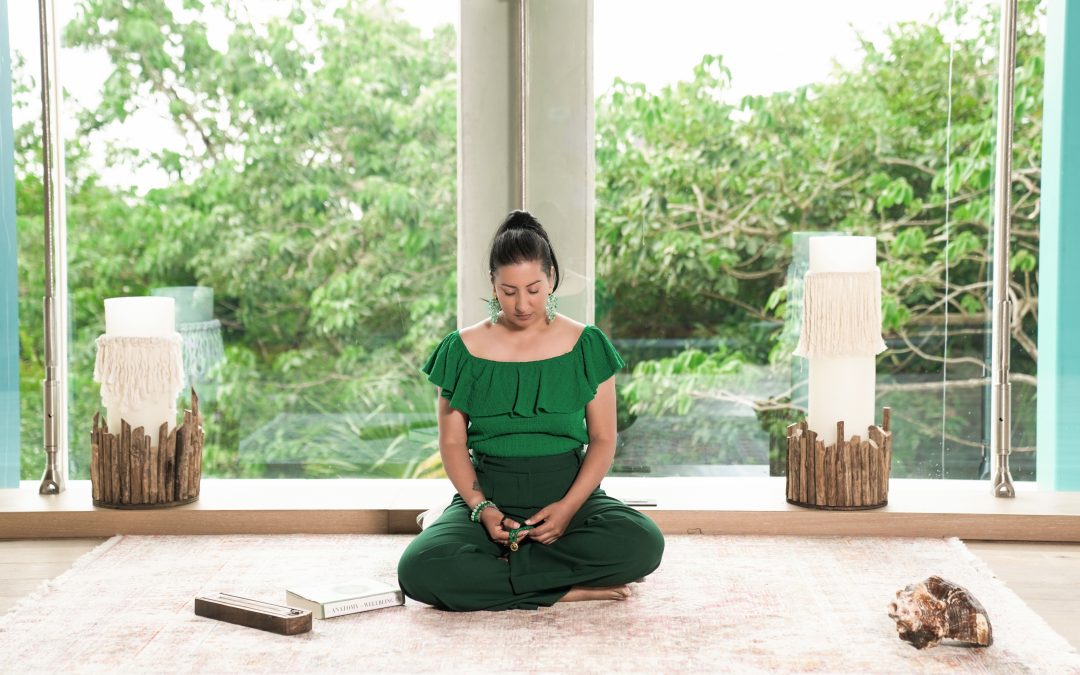
Feb 1, 2024 | Sedona Yoga Festival Teacher Feature
A New Paradigm for Healing Through the Power of Ritual
by Dr. Monisha Bhanote
From the moment I entered the room, it was buzzing like a swarm of bees, with an energy in the air that seemed about to erupt. This was the energy of two hundred human bodies and trillions of cells, synchronized to a vibration I believe could be felt even in the deepest oceans. We gathered for a weekend of connection and learning, old friends and new, all united by the desire to heal the world. Yet, in the midst of this gathering, a common theme emerged that is best characterized as a caged bird.
“The caged bird fluttered its wings, trying to fly, but with each flutter, the wing smashed against the cage walls; as she continued to bang the walls, the exhaustion overcame her, and the door finally opened. Her last ounce of energy was devoted to flying through the open door and feeling the freedom to heal, breathe, and follow her intuition.”
This is what it’s like to be a physician in healthcare today. It is becoming increasingly difficult for us to keep our wings free of the cage in which we are restricted. So let me tell you, if you feel like a caged bird without a purpose, let me open your cage door for you. I’d like to extend you an invitation to my family, to my community, which is embracing a new healing paradigm.
What is a ritual?
A ritual is a set of actions or behaviors you repeat in the same way with a specific purpose, a great deal of self-awareness, and intention. Rituals can be as simple as washing your hands before eating or brushing your teeth at night, but they can also be more complex, like cooking an elaborate meal for your family on Sunday nights (or any other day of the week).
Rituals have power because they give us structure in our lives; they provide us with something to look forward to each day—a moment when we know exactly what’s going on around us, who we’re with, and what they’ll say next. When we don’t have this predictability in our lives, it can make us feel anxious or scared because there are no clear boundaries between ourselves and others; therefore, creating rituals helps us feel safe by giving us boundaries within which we operate in addition to assisting people in coping with stressors such as illness or loss during times of crisis by providing comfort through familiarity (i.,e., using familiar foods). Rituals also allow individuals experiencing stressful situations such as trauma-related disorders (e.,g., PTSD) to maintain a sense of control in their lives.
“When we set aside time to meditate, practice yoga, or engage in other self-care activities, we’re strengthening our minds and bodies, and initiating #CellCare,” says Dr. Monisha Bhanote, founder of WELLKULÅ.
Dr. Bhanote’s approach to health care is about more than just treating symptoms; it’s about treating the whole person. The goal is to support people as they transition from unhealthy lifestyles to healthy ones by incorporating an integrative lifestyle into the daily rhythms of their life. Integrative lifestyle medicine is a relatively new field of study within Western medicine, but its origins go back thousands of years—and many cultures have long been using rituals as tools for healing both physical ailments and mental wellbeing issues like stress, anxiety, and depression
With this new paradigm in mind, Dr. Monisha Bhanote shares some simple steps she takes with her patients whenever possible. This means supporting them with changes in diet, exercise, and sleep habits; working with them through medical conditions (such as diabetes or high blood pressure) that can be managed with diet and lifestyle changes alone; and providing support during times of stress or anxiety so they don’t fall back into old patterns of behavior that are harmful to their health.
The practice of Ayurveda has always been holistic – that is, it views the body as a whole rather than focusing on individual parts. By addressing all aspects of your health at once – mind, body, and spirit – you’re more likely to achieve lasting results than treating just one symptom at a time. Our ultimate goal is and should be to prevent further deterioration of the body’s ecosystem by improving cellular health.
In this way, she says, “You become an active participant in your healing.”
Dr. Bhanote believes that you can take control of your health. She says that you are the most important part of your healing process, and by making changes now, you can prevent the disease from occurring later in life. “It’s never too late to start making changes,” she says. “You don’t need a diagnosis or even an illness to benefit from these practices.”
In this way, she says, “You become an active participant in your healing.”
There are many ways to strengthen your mind and body — you may be surprised by some!
How your cells function and, ultimately, how your body supports you can be affected by each of these lifestyle practices.
Aside from strengthening your body, exercise has been shown to lower blood pressure and reduce inflammation in people with chronic conditions such as diabetes and heart disease.
Meditation can help people with chronic pain manage stress, improving sleep quality and reducing pain levels.
Yoga combines meditation and physical exercise into one activity – perfect for those who want an all-around mind-body boost! And bonus: yoga has been shown to improve moods by reducing depression symptoms among people who suffer from depression or anxiety disorders (but don’t worry if you haven’t tried it yet – there are many other ways to incorporate healing into your rituals).
The bottom line? You don’t have to look far to find the benefits of a healthy lifestyle. Regular exercise, meditation, and sleep help your body stay strong and fight disease. But they also improve your mood and mental health by helping you manage stress more effectively. Try incorporating some of these practices into your daily rhythms to improve your health.
#CellCare is self-care.
We are living in a time when people are seeking healing. Whether physical or mental, we have an innate desire to feel better. The good news is that there are ways to do this, and they don’t require expensive visits to the doctor or therapist! I hope that if you have ever needed to heal, you have had the opportunity to experience the healing power of ritual.
Learn with Dr. Bhanote in person at our 10-year anniversary celebration April 27–30! Passes available here.
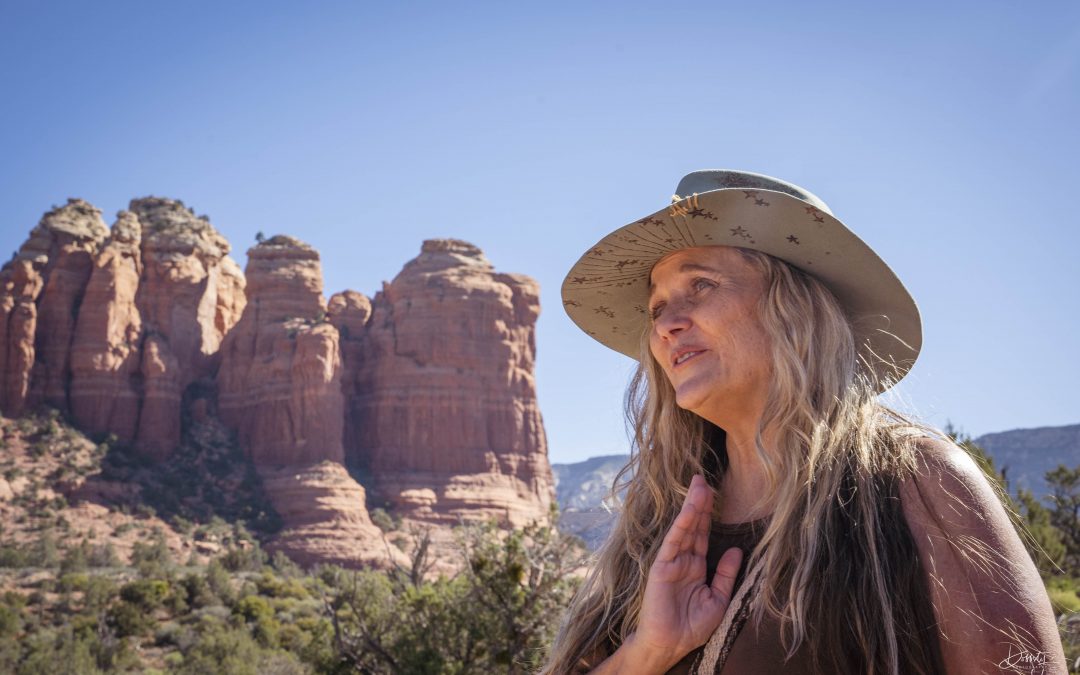
Jan 30, 2024 | Sedona Yoga, Sedona Yoga Festival Teacher Feature
Anahata Ananda: Shamanic Healing Arts for Transformation
We’ve all felt stuck in a rut in our lives. Most of us have experienced imposter syndrome, or persistent sadness, or a general feeling that we’re not necessarily walking the path of our soul — that we’re not, in more Vedic terms, living our dharma. It is never the wrong time to address these conflicting feelings, and to give credence to our deep personal truths. For Anahata Ananda, this moment came for her two decades ago, in her own “dark night of the soul,” as she calls it. She was going through what she now calls a “marital liberation” (also known as divorce), and “it was a big shock to my system,” she says. “There was a lot of grief. There was a lot of rage and pain; not only from that experience, but other things in my childhood, upbringing, youth, or young adulthood that never got processed properly.”
A Personal Journey of Healing
Anahata began a healing journey to address these problematic distortions, but looking back, recognizes that she was scraping together her process: reading various books, visiting various wellness centers, going to counseling. “It was not really working for me,” she says. “None of these were getting at the real core of the issues. They weren’t providing me different tools that I could shift the pain into purpose, and get myself out of survival mode to learn how to reclaim my power, how to clearly communicate, and how to set boundaries.”
This frustration set her on the path of shamanic exploration and learning, and ultimately would become the foundation for Shine Sedona — a Sanctuary for the Soul. Shine is a unique center that provides a welcoming and nourishing community to support core-healing, personal growth, and heart-awakening through the offerings of world-class Healers and Facilitators. For Anahata, shamanic modalities “helped me release my rage, release grief, open my heart, and see my part in my pain,” she says.
The Development of Shamangelic Offerings
Anahata’s signature Shamangelic breathwork, healing sessions, and other services encapsulate the essence of what she offers. “The shaman is not afraid to go and look and see where the density is, where the shadow is, or where the pain is. And I’m not afraid to do that. The angelic part is doing that with kindness, compassion, and tenderness by alchemizing the shadow work and the spiritual work,” she says.
Anahata tailors her services to exactly what someone needs, and then makes sure to be of support for what is released. “There’s time to support somebody’s rage, as well as time to just hold them in their tears and their sadness, and to create a safe, soft space.” The healing comes when, after experiencing this support, a person is able to step into their true power and facilitate their own healing.
Given the sacred, sensitive nature of this work one may expect that they’d need to work with Anahata for an extended period of time to receive the full effect, but she believes in facilitating efficiently. “I know that there is a sense of urgency to get at these things because until they are resolved or shifted or healed or released or realigned, they’re going to continue to create chaos physically, emotionally, energetically, mentally, and spiritually,” she says. “The ability to help someone expedite that process is really powerful.”
The Journey to Get Here
Anahata has been working in the healing arts for over two decades, and has trained in several different modalities. Part of what she now offers are trainings so that she may pass on to others what she has learned. Her training courses help people amplify and refine their skillset, build confidence and abilities, and provides tools that fit seamlessly with people’s unique natural gifts. “It really lights me up to be the healer’s coach, teacher, and guide,” she says.
In the same way that Anahata offers uniquely-tailored training for one-on-one seekers, there is a wide range of programming and learning opportunities offered at Shine. They do grief journeys, womb healing blessings, land journeys, private sound healings, among other things, as well as host retreats of all stripes.
You can get a taste of what Anahata offers by joining her at the Sedona Yoga Festival this March 14–17! Passes available here.
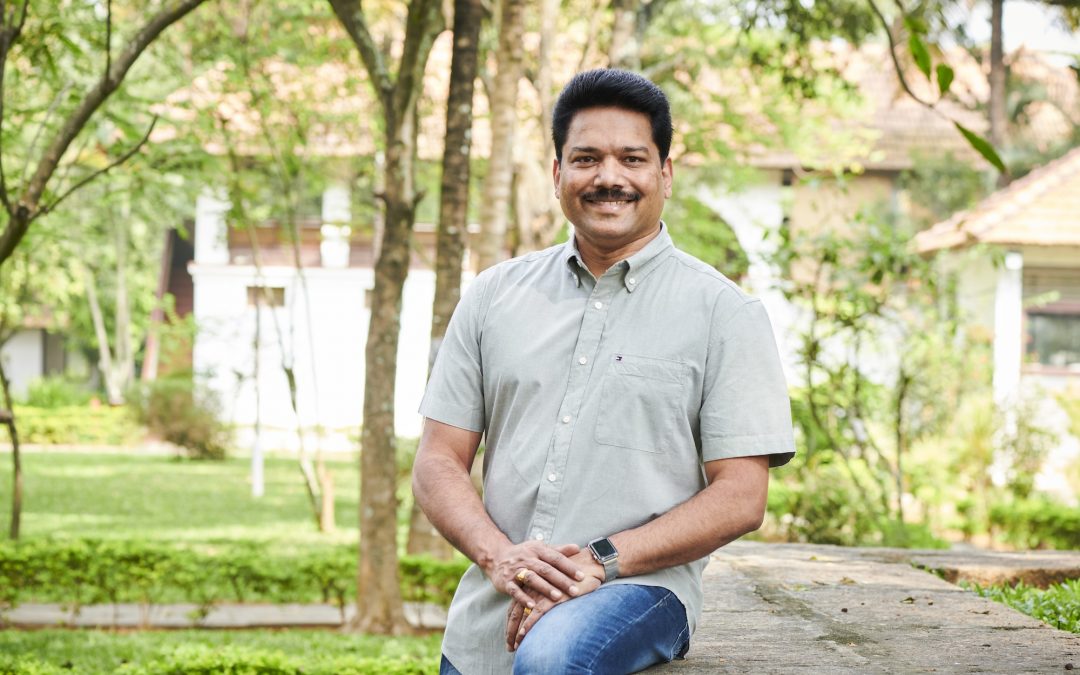
Jan 16, 2024 | Sedona Yoga, Sedona Yoga Festival Teacher Feature
Ayurveda as Integrated Healing for Wholeness
When we approach yoga, we often do so in a way that feels fractured — we lay out our mat, and it’s time for asana. We sit on our cushion, and it’s time for meditation. Even if we integrate other practices, such as Ayurvedic rituals before bed, we often think about them as separate to-dos that are to be checked off a list. According to SYF2024 presenter Vaidya. Jayarajan Kodikannath, BSc, BAMS, and Chief Ayurvedic Consultant & Academy Director of Kerala Ayurveda, however, we’re doing ourselves and the practices a disservice by thinking of them as separate activities. “What is lacking,” he says, “is the approach and application of yoga as a system. Yoga is a complete integration of an individual starting from the outer world to their inner world. The whole journey of an individual is yoga,” he says.
The honorary title “Vaidya” is a Sanskrit term for a non-codified Ayurvedic doctor who is a part of lineage of Ayurvedic practitioners in the community tradition of Kerala, Southern India, but as teacher and director as well as Ayurvedic practitioner, Vaidya. Jayarajan (known informally to his students as “Dr. J.” for short) brings more to the table — much like the understanding of Ayurveda itself.
Ayurveda is often called the sister science of yoga, and primarily associated with the physical self; a prescription for diet, medicine, physical wellbeing. Yet according to Dr. J., it’s much more than that. “It’s not a physically-oriented healing science,” he says. “It’s a science of life.” While we need our physical body for longevity, to clear out the karma accumulated and grow into a self-realized stage, Dr. J. says with a laugh, “Ayurveda covers the body, mind, and emotion. It’s a complete system of healing — physical, mental, emotional, spiritual — at all levels.” It’s a way to work toward continuous contentment, beyond just healing problems, like whack-a-mole, as they come up. Ayurveda, says Dr. J., is a way to stay healthy, harmonious, happy, and peaceful — no matter what challenges life throws your way.
What It Means to Be Harmonious
This all sounds well and good, but in today’s busy, stressed, and tragedy-heavy world, the idea of true harmony may feel like a pipe dream. And yet Ayurveda, and all the Vedic sciences, teach that we are, in fact, always in harmony with nature and the world around us. “The very definition of life in Ayurveda is that nature flows through you without interruption,” says Dr. J. “You are always in relationship with everything — including fellow human beings, animals, birds, plants, nature. Your sustenance is based on an in-sync relationship with nature and its rhythms,” he says. This is true whether we are aware of it or not. When we are aware of it, however, and intentionally living in awarenesses and pursuit of that connection, this is when we feel harmonious in it.
This doesn’t mean that we don’t feel pain or darkness. “The reality is that if there is daytime, there will be nighttime,” says Dr. J. “If there is hot summer, there will be cold winter. We must understand that everything is part of one — you cannot have only one aspect of existence.” What the Vedic sciences teach are ways to remain neutral, despite the fluctuations of the external world. “The ultimate state of human mind and emotion is to be able to accept not only the pluses, but the minuses too — and to stay neutral as a witness. From here we are able to be a part of positive changes for a shift in ourselves, our family members, our colleagues, our community. We are able to accept reality and make it better. And this is an individual’s dharma, or purpose,” says Dr. J.
Avoiding Spiritual Bypassing
The emphasis on positivity and creating positive shifts does not mean, however, that we don’t recognize or acknowledge the darkness. “The existence of this cosmos itself is in its disorder,” Dr. J. says. “There is no perfection.” But perfection is in the eye of the beholder — the only way we perceive something to be imperfect is through our mind’s perception. “We generally relate that more money means more happiness; or if I’m in a higher position, I’ll be happier; or if I’m in a good relationship, I’ll be happy. These are all human intellectually-created criteria to be happy. In reality, it is none of this — it is our frame of mind. Shifting that frame of mind is what we need, individually and collectively.”
Using Ayurveda to create the experience of inner harmony is exactly what participants can expect to learn from Dr. J. at the Sedona Yoga Festival this March. As we explore what it means to be All Together Now, Dr. J. will impart what it means to be one cell of the interconnected whole — that is, how we can take care of ourselves in order to be able to move from the whole heart and love others in that place of harmony and healing.
Experience this depth of wisdom and knowledge with Dr. J. this March. Passes are on sale now!
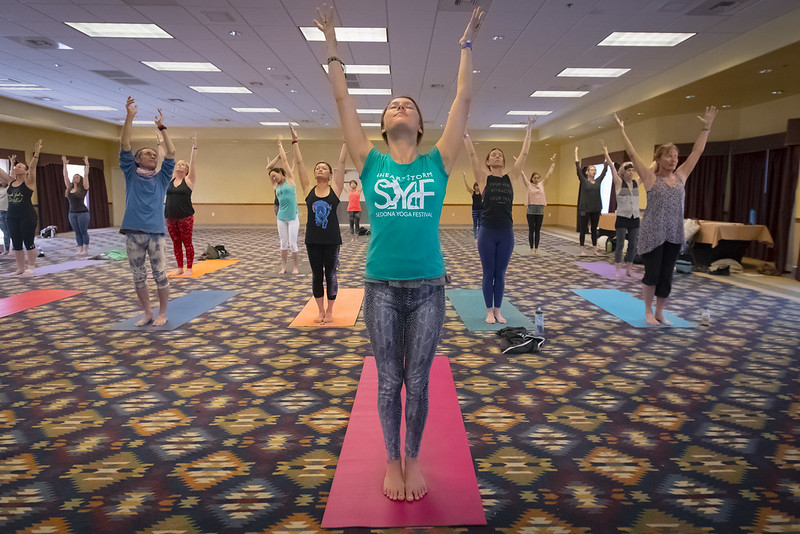
Apr 18, 2023 | Programming Spotlights, Sedona Yoga Festival Teacher Feature
A Yoga Hug to Midline
By Donna Schnoor, E-RYT500/YACEP owner of Yoga4Ullc
Lead image by Arin Pitcher
As yoga practitioners, most of us have heard the term sthira sukham asanam. It is one of the most often quoted aphorisms in Patangali’s Yoga Sutras, (2.46). In general translation it stands for steadiness and ease in your seat. So what does all this have to do with the term “hugging to midline”?
The “midline” is the imaginary vertical axis that bisects the whole body, from the crown of the head all the way down to the foundation. If you’re familiar with construction, think of it like a plumb line. In Yoga think of it as the Sushumna, the vertical axis or channel in the subtle body where your pranic energy flows. The midline is the foundation in which each posture is built.
Physically drawing or (hugging) into the midline will help make your practice stronger and more stable. Instead of using the outermost muscles to support the pose, we learn to engage the deep inner muscles, so the pose starts from the inside out, rather than the outside in.
On an emotional and spiritual level, finding your midline helps us to find that inner strength and stability to cultivate balance in our lives. This balance between action and stillness, or steady and comfortable. This balance supports you from the inside, just as the physical action of muscles hugging to midline supports our bodies in practice.
Eckart Tolle speaks of “feeling the inner body as a way of connecting to the present moment”.
When we come to our first seat of practice, we find our own physical space, we turn inwards to access something deeper within ourselves in which to build our practice.
As we start to move, we begin to learn to ‘hug-in’, to firm the muscles around the bone, to create a strong and stable foundation in our practice.
Learning to ‘hold our center’ gives us the support we need when being pulled off balance with life’s experiences, whether they be physical, emotional, or mental.
When we reach Savasana, our opportunity for relaxation and integration, we find our center once again, both physically and mentally, and from this center we can experience a sense of letting go.
Explore your midline and the foundation for functional asana with Donna at SYF2023, April 27–30! Passes are available here.
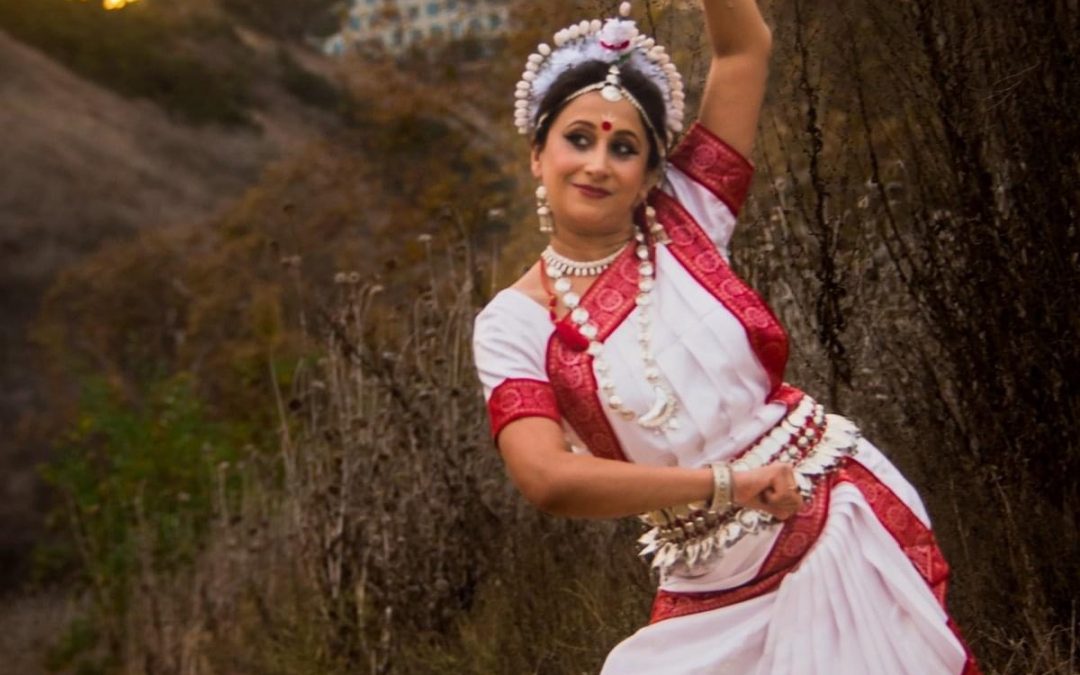
Apr 18, 2023 | Programming Spotlights, Sedona Yoga Festival Teacher Feature
Role of Odissi Movements in Trauma Healing
by Nilanjana Banerjee, RDM Studio
Lead image by The Dreamy Pomgrn8
Odissi is a 2000-year-old dance from Eastern India. This dance is rooted in yoga, bhakti and spirituality. It connects the human spirit to the divine and was performed for centuries inside the temples by female dancers. These women were the equivalent of the priestesses in the temples using powerful Sanskrit mantras and dance movements to worship and invoke the Gods and Goddesses.
Dance movement is another somatic modality like yoga, breathwork, meditation and sound bath to open up your chakras, and create more space specially in your ribcage, and hips. These are areas in the body that are most stuck in todays modern world.There are senescent cells that form when someone undergoes trauma that holds onto the memories within their cells. It’s like they are frozen in time.
Odissi dance movements are unique in the sense that there is a significant movement of the neck, rib cage and opening of the hips. According to Dr Mima, who specializes in mind body connection,
“As a woman in modern day life, you spend very little time on these areas and in fact sitting at desks, driving cars actually keeps the hips and ribs closed. Over time this constricts proper airflow and the energy within the sacral chakra. By opening the hips and ribs in this dance you increase blood flow to your sacrum and oxygenation to your lungs and chest organs. Dancing barefoot also connects the body with earth’s energy. The earth carries an electromagnetic field and when we connect barefoot with the earth we literally ground our energy and rebalance ourselves. This relieves anxiety and stress and also helps rebalance the adrenal and endocrine glands in the body.”
Both masculine (shiva) and feminine (shakthi) energies are addressed in this dance. Once the strong masculine moves and softer feminine moves are mastered, the dancer begins to internalize the moves and their meaning. This is very similar to meditation. In dance you not only connect with yourself in flow, but you are also connecting with the divine. There is deep healing when this occurs.
Nilanjana says, “working with numerous adult students, over a period of time I realized the power of my dance, how I was not only teaching them an ancient art but also healing them with my energy, giving them the power and confidence of a Devi. Be it physical injuries or deep emotional trauma, most of their traumas came to the surface during the course of my regular teaching. There was an emotional release and sometimes continuing the practice helped many deal with traumatic life situations, empowering them to find and embody the strength of the Gods/Goddesses and even transform their outcomes to a point of reaching bliss. Of course this takes time, dedication and practice. But it’s the discipline and commitment that makes all the difference.”
It is believed that one can access the Anandmaya kosha by regularly practicing this dance and being immersed in this sadhana.
Please join Nilanjana and RDM Studio for Trauma Workshop 8.00 am on Friday April 28th and an upcoming dance performance at SYF2023. Passes are available here!







